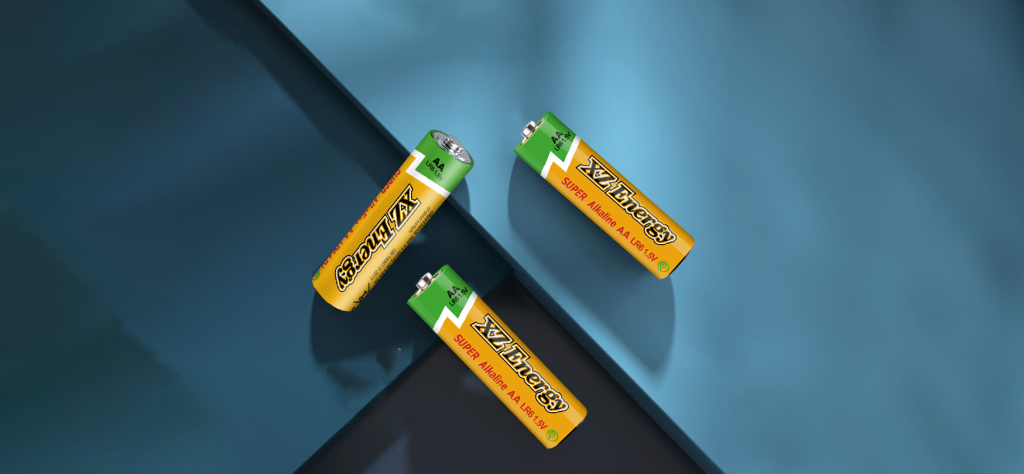Most of the batteries are harmful garbage, such as button batteries, rechargeable batteries, nickel-cadmium batteries and aluminic acid batteries used in cars, and the only controversial is the dry battery, what is the dry battery? Dry batteries are the most common batteries around us, such as the batteries installed in the remote control at home. To find out whether the dry battery is harmful, it is necessary to start with the structure and principle of the dry battery. The most common dry battery is the manganese-zinc battery, because the positive and negative reaction substances are respectively manganese dioxide and zinc named. The structure of the manganese zinc battery is actually very simple, in the positive electrode bulge is a piece of graphite material, the graphite is covered with a layer of manganese dioxide, manganese dioxide outside the presence of mushy substances, these mushy substances is the electrolyte, the material is ammonium chloride.
The outermost layer of the manganese zinc battery is the battery shell, and is made of zinc, so the battery skin is also called zinc skin.
The positive electrode of the dry battery is graphite, but in fact the graphite does not participate in the reaction, the reaction is the manganese dioxide wrapped in graphite, so the positive material of the dry battery is manganese dioxide, and the negative material is the shell of the battery, that is, zinc. When we connect an electrical appliance to the positive and negative terminals of the battery, the electrical appliance can work.

How is the current generated? In fact, it is very simple, the zinc in the negative electrode is ionized to produce zinc ions and electrons, and the electrons go to the positive electrode through the connection line of the electrical appliance, so that the current is generated. At this time, due to the relationship of ionization, the ammonium chloride electrolyte will release hydrogen ions in the process of ionization, with the electrons generated by the negative electrode to the positive electrode, so manganese dioxide plus electrons plus hydrogen ions to generate manganese trioxide and water, which is the complete chemical reaction process inside the dry battery.
People who have used dry batteries know that sometimes the battery for a long time may appear “flow soup” phenomenon, this is because the dry battery reaction process will continue to consume zinc, if the battery is used for a long time, excessive consumption of zinc, the shell will appear loopholes, so the electrolyte composed of ammonium chloride will flow out.
It can be seen that the power of the dry battery actually depends on the consumption of zinc, the more zinc consumption, the lower the voltage, and the battery will slowly run out of power. So, are dry batteries harmful? It seems to be a little harmful, because there is zinc in the dry battery, zinc is a substance that is harmful to soil, water and even air, zinc into the soil will cause the soil to lose activity, which is not conducive to the growth of crops, and zinc into the water will threaten the life safety of aquatic organisms. However, the content of zinc in discarded dry batteries is limited, and the real reason for listing dry batteries as harmful waste is another. Let’s take a look at the structure of the dry battery, zinc is a chemically very active metal, it is really no problem with direct contact with ammonium chloride electrolyte?
Direct contact between zinc and ammonium chloride electrolyte is of course problematic, because zinc will ionize into zinc ions and electrons, and ammonium chloride will ionize hydrogen ions, hydrogen ions plus electrons will become hydrogen, and the battery is a completely closed structure, if there is continuous hydrogen production inside, and finally will “bang” explosion.
In order to solve this problem, zinc can not be in direct contact with ammonium chloride electrolyte, so it is necessary to add a layer of mercury on the surface of zinc, so that it is isolated from ammonium chloride, with mercury, naturally, it is unnecessary to say that dry batteries are certainly harmful garbage. Mercury is a substance that has great harm to the human nervous system and usually enters the human body through the respiratory system, so any material containing mercury is undoubtedly harmful garbage. Since dry batteries contain mercury, then naturally should be harmful waste, why there is controversy? Because the mercury content in the current dry battery is very small, or even no.
Now the mercury content in dry batteries has been strictly limited, and many dry batteries can even be completely mercury-free, how is this done?
In fact, it is very simple to change the acidic ammonium chloride electrolyte to alkaline potassium hydroxide electrolyte, alkaline substances are not easy to react with zinc hydrogen evolution, so there is no need for mercury protection, so many alkaline batteries also put “mercury-free” as their promotional selling point, so that mercury-free alkaline batteries are other garbage is no problem.
